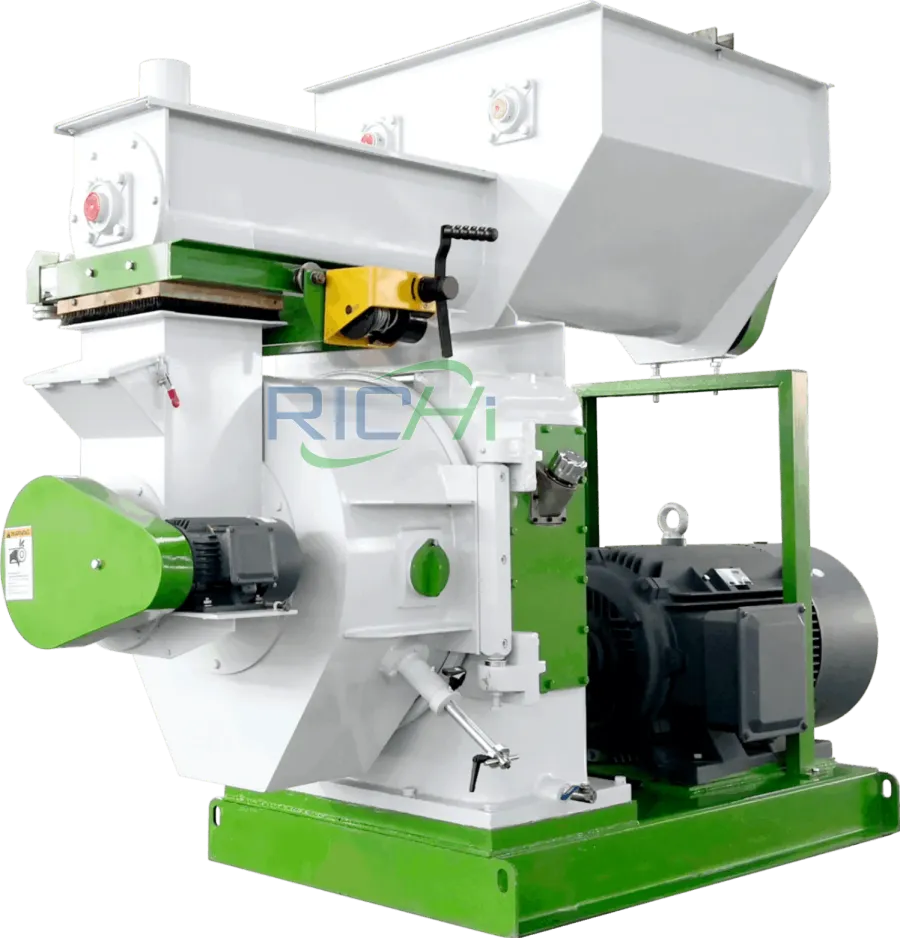A 15 t/h animal feed plant represents a significant investment for feed producers, designed to efficiently transform raw materials into high-quality pellets for livestock and poultry. To ensure optimal performance, longevity, and cost-effectiveness, proper maintenance and care are essential. This article outlines effective maintenance and care strategies for a 15 t/h animal feed plant machinery, aiding operators and managers in keeping their equipment in peak condition.
1. Develop a Preventive Maintenance Schedule
Establishing a preventive maintenance schedule is crucial for maintaining your 15 t/h animal feed plant machinery. This schedule should encompass regular inspections, lubrication, and the replacement of wear parts.
- Inspection Schedule: Create a routine inspection plan for critical components, such as the pellet mill die, rollers, bearings, and gearbox. Conduct inspections at intervals that align with the machine’s usage and manufacturer recommendations, typically weekly or monthly.
- Lubrication Schedule: Ensure all moving parts are lubricated according to the manufacturer’s specifications. Develop a lubrication timetable that includes checking oil levels, changing lubricants at suggested intervals, and using the appropriate types of oils and greases.
- Wear Parts Replacement: Identify components susceptible to wear, like the die, rollers, and screens. Monitor these parts closely during inspections and replace them proactively based on their usage and condition to prevent unexpected breakdowns.

2. Implement Thorough Cleaning Practices
Regular cleaning of the 15 t/h animal feed plant machinery is vital for maintaining optimal performance and preventing issues like feed contamination and equipment damage.
- Cleaning Schedule: Establish a cleaning routine that includes daily, weekly, and monthly tasks. Daily cleaning should focus on removing spilled feed and dust accumulation, while weekly and monthly cleanings should involve a more thorough clean of components such as the mixer, conditioner, and pellet mill.
- Cleaning Methods: Utilize suitable cleaning techniques and tools for each component. For example, use compressed air to remove dust from hard-to-reach areas and a stiff-bristle brush to eliminate feed buildup. Avoid using water, as it can cause corrosion and rust.
- Cleaning Agents: Employ approved cleaning agents that are safe for use on machinery and do not leave residues that could contaminate the feed. Consult with the manufacturer or a feed safety expert for recommendations on suitable cleaning products.
3. Monitor and Maintain Operating Conditions
Ensuring that the 15 t/h feed factory machines operates within recommended parameters is essential for maintaining efficiency and preventing premature wear.
- Temperature Monitoring: Regularly monitor machinery temperatures during operation, particularly in critical areas like the pellet mill and gearbox. Excessive heat can lead to component failure and negatively impact pellet quality. Ensure the cooling system is functioning properly to maintain optimal temperatures.
- Pressure Monitoring: Monitor pressure settings of the pellet mill rollers and die to ensure proper compression of raw materials. Low pressure may prevent proper pellet formation, while excessive pressure can lead to undue wear and possible damage to the machine.
- Feeding Rate Monitoring: Maintain a consistent feeding rate to avoid overloading or underfeeding the machine. Uneven feed can cause fluctuations in pressure and temperature, leading to instability in pellet production and potential damage to the machinery.
4. Train Operators and Maintenance Personnel
Providing proper training for operators and maintenance personnel is crucial for the safe and effective operation of the 15 t/h animal feed plant machinery.
- Operational Training: Offer comprehensive training on machine operation, including how to start and stop the machinery, adjust settings, and monitor performance. Operators should grasp the importance of consistent feeding rates and raw material quality monitoring.
- Safety Training: Educate operators on safety protocols to minimize the risk of accidents and injuries. This includes the proper use of personal protective equipment (PPE) and an understanding of emergency shutdown procedures.
- Maintenance Training: Train maintenance personnel on routine maintenance tasks, such as lubrication and cleaning, ensuring they can perform these tasks effectively and recognize when professional maintenance is needed.
5. Maintain Comprehensive Records
Keeping detailed records of maintenance activities and equipment performance is vital for ensuring the long-term reliability and efficiency of the 15 t/h animal feed plant machinery.
- Maintenance Logs: Document all inspections, maintenance tasks, and part replacements. This information can help identify wear trends and inform future maintenance decisions.
- Performance Records: Track performance metrics over time to observe changes and identify potential issues. Analyzing this data can help optimize operating conditions and enhance overall efficiency.
- Spare Parts Inventory: Maintain an up-to-date inventory of critical spare parts and consumables, such as filters, belts, and wear parts. Ensure these parts are readily available to minimize downtime in case of unexpected failures or breakdowns.
6. Collaborate with Manufacturers and Experts
Building strong relationships with machinery manufacturers and industry experts can provide valuable support and guidance for maintaining your 15 t/h animal feed plant machinery.
- Manufacturer Support: Utilize the manufacturer’s expertise and resources, such as operator manuals, maintenance guides, and technical support. Adhere to their recommendations for maintenance and care to ensure optimal machinery performance.
- Industry Experts: Engage with industry experts, including feed safety consultants and maintenance specialists, to stay informed about best practices and emerging technologies. These experts can offer valuable insights and recommendations for optimizing machinery performance and longevity.
Conclusion
Maintaining and caring for a 15 t/h animal feed plant machinery requires a comprehensive strategy that includes preventive maintenance, thorough cleaning, monitoring operating conditions, training personnel, keeping detailed records, and collaborating with manufacturers and experts. By implementing these practices, feed producers can ensure that their machinery operates efficiently, produces high-quality pellets, and has a long service life.
Investing in proper maintenance and care not only protects the initial investment but also contributes to the overall profitability and sustainability of animal feed production operations. As demand for high-quality animal feed continues to grow, maintaining well-functioning and reliable machinery will be critical for success in this competitive market.
For details please contact: pellet line
WhatsApp:86 138 3838 9622
Email:enquiry@richipelletmachine.com










